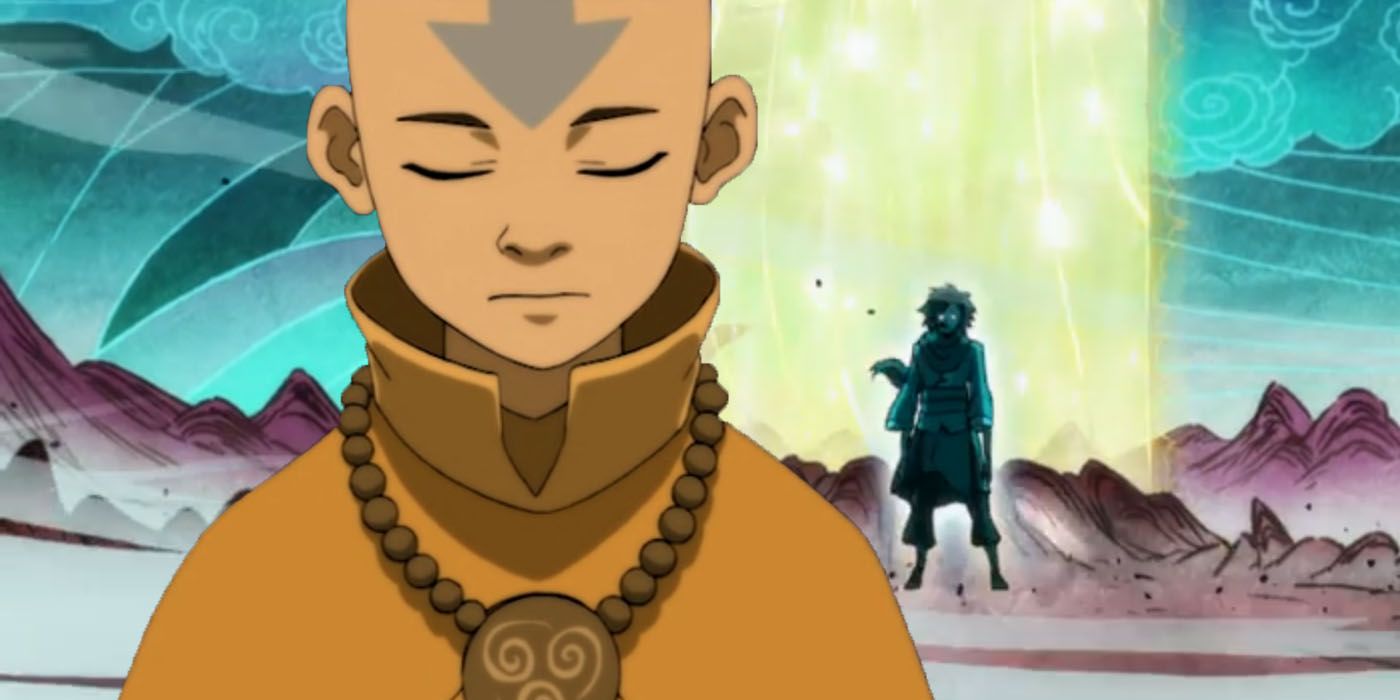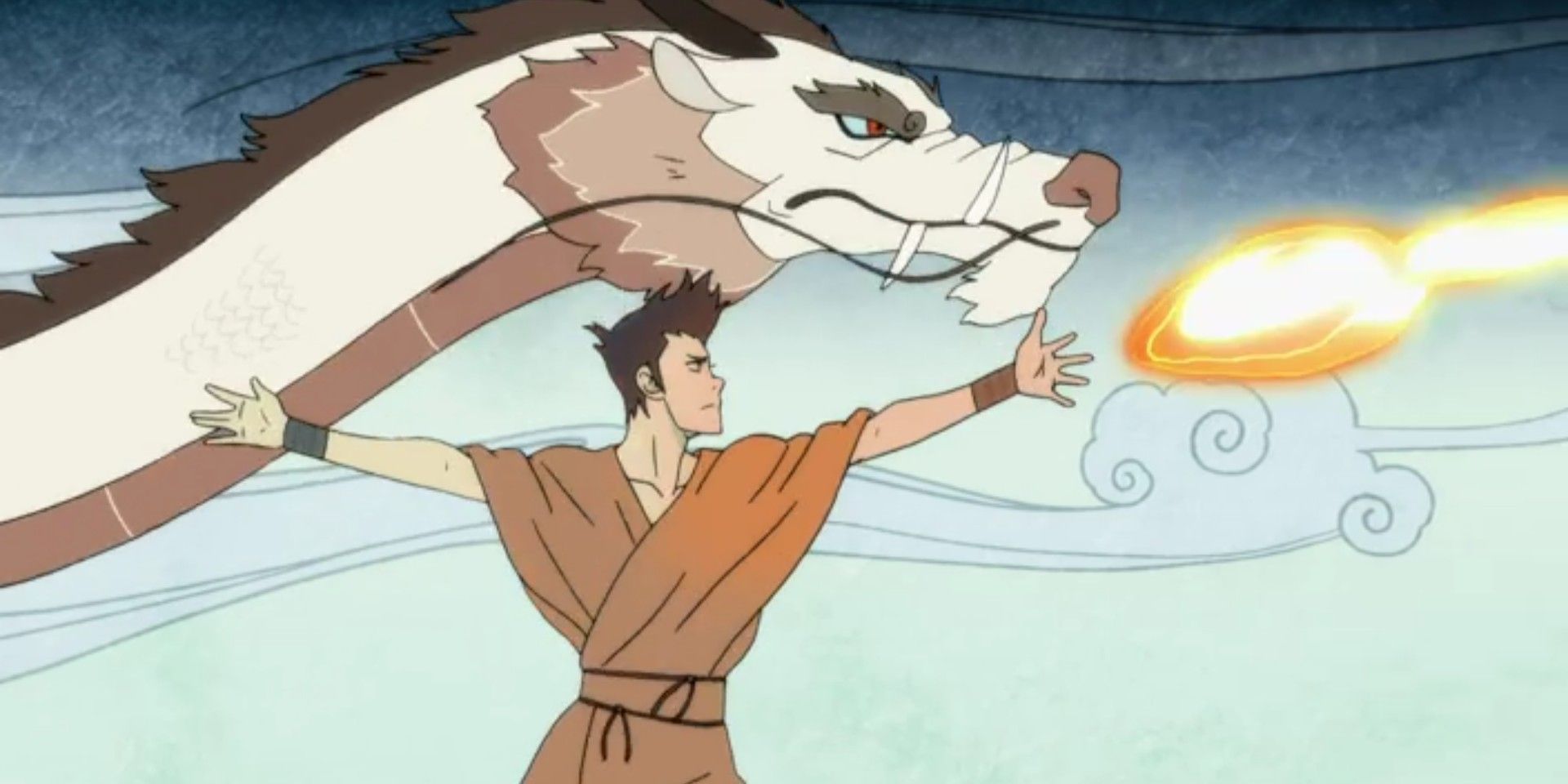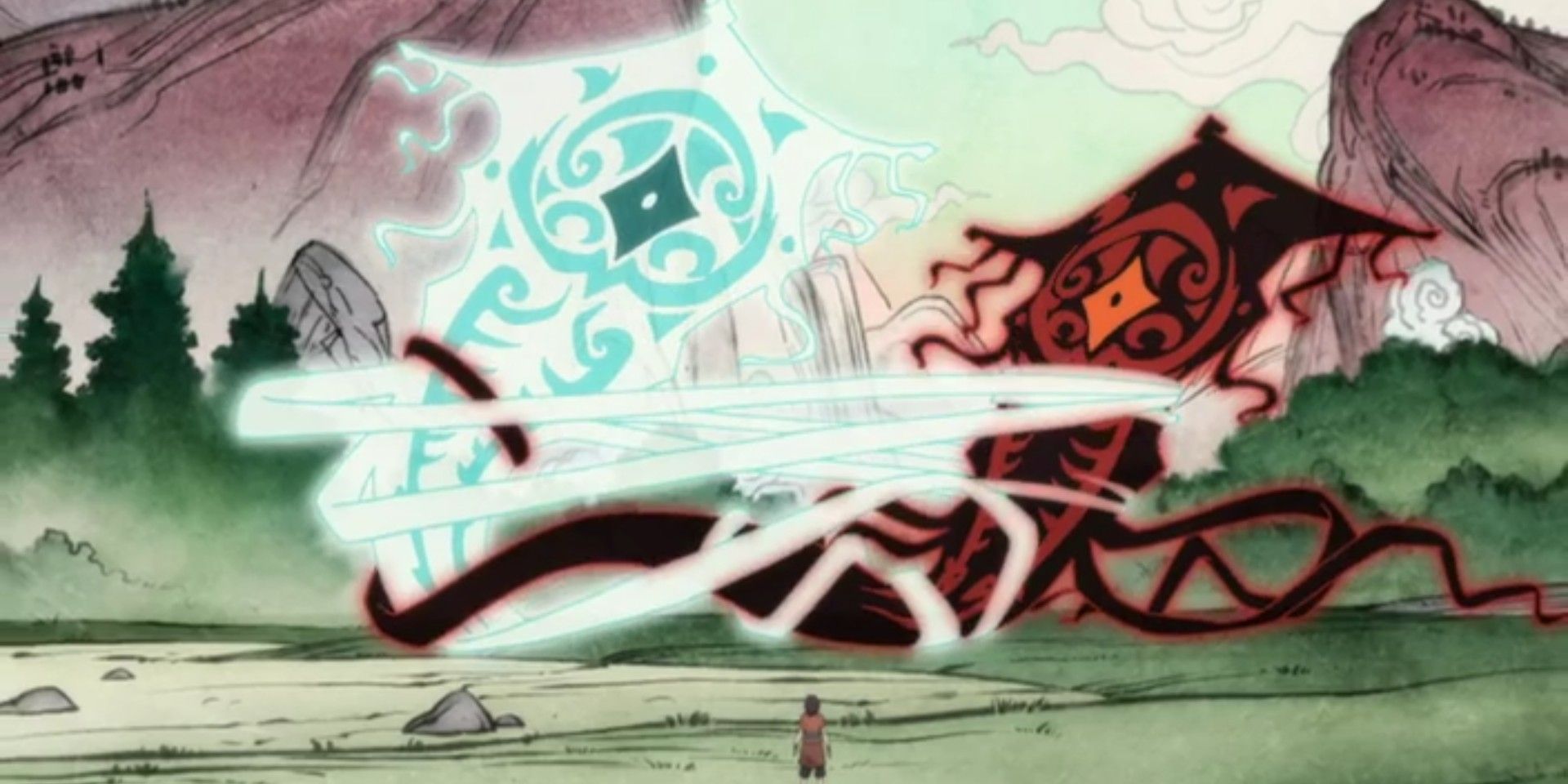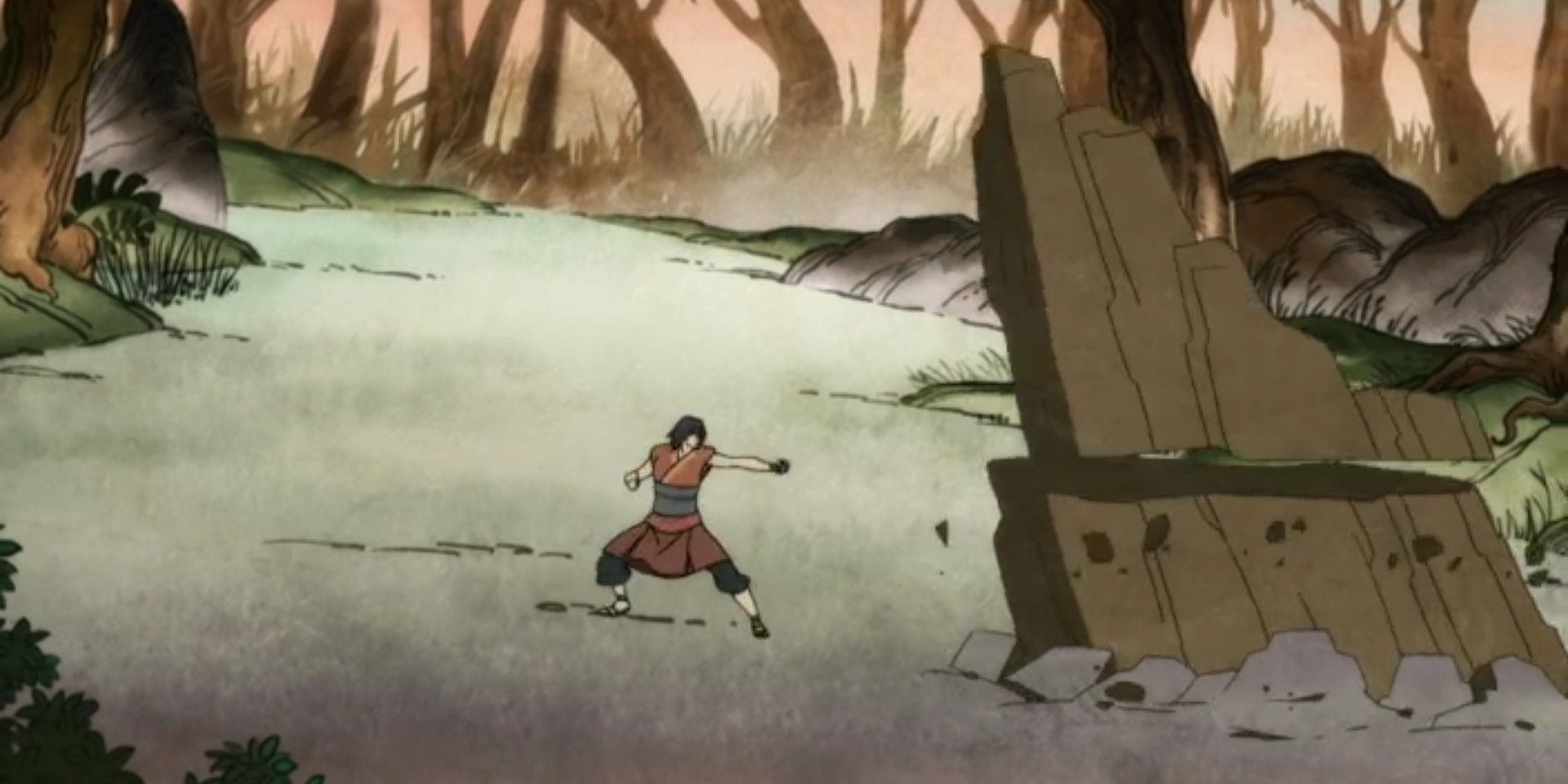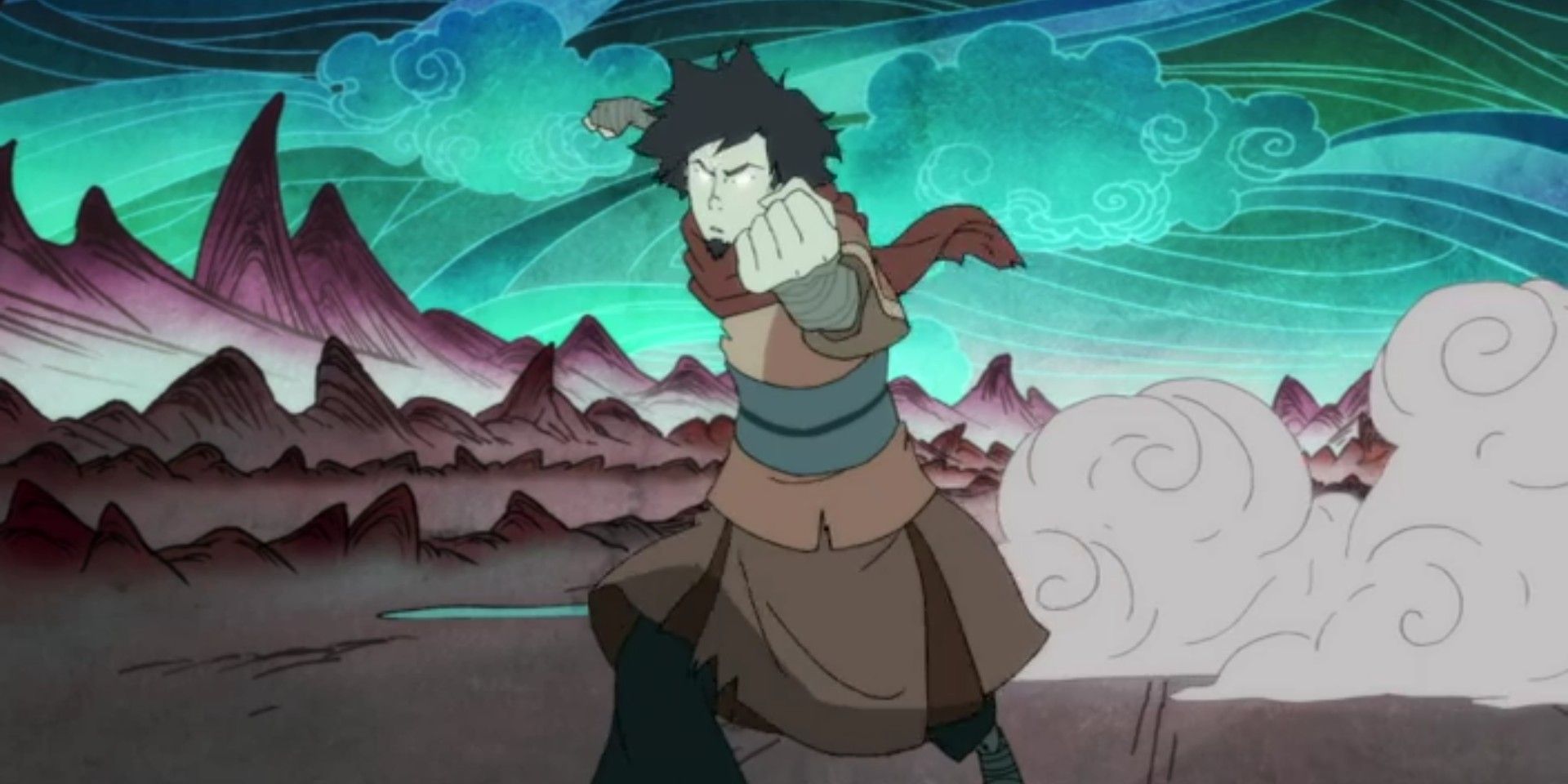Avatar: The Last Airbender's young hero Aang is the latest in a long reincarnation cycle of Avatars - benders born once into every generation to maintain balance between the spirits world and mortal world - but who was the first Avatar? Sequel series The Legend of Korra dives into the origins of the Avatar in season 2, explaining how a young firebender called Wan came to change the balance between spirits and mankind.
The two-parter "Beginnings" reveals that, almost 10,000 years before the events of Avatar: The Last Airbender, humans once lived in great cities on the backs of lion turtles (like the one that teaches Aang how to energybend in Avatar's series finale). The lion turtles protected humans from the spirits that roamed the land, and gave them the gift of the elements when they ventured out of the city. Wan was an Aladdin-like figure: a poor young thief who stole from the wealthy Chou family who ran the city, but shared the food that he stole with his human and animal friends.
One day, Wan hatched a plan to use the lion turtle's gift of fire to steal food from the Chous. He volunteered to join a hunting party, was given the power to create fire by the lion turtle to use on the trip, and then pretended to be scared and returned to the city - not giving the fire back, as he was supposed to do. He used his fire powers to lead a siege on the Chou family's larders, but was defeated and banished from the city into the Spirit Wilds. Wan asked the lion turtle if he could at least keep the fire to defend himself in his exile, and the lion turtle agreed. That's where Wan's journey to mastering all four elements - and becoming the Avatar - began.
Avatar: The First Firebender
Before Wan, firebending as a complex martial art didn't really exist among humans. Though the lion turtles gave humans the temporary gift of the elements, the hunters' use of fire was brute force and clumsy. After being forced out into the Spirit Wilds, however, Wan befriended the spirits and was accepted among them. A white dragon taught him the art of firebending, using specific forms to channel the fire and make it an extension of his own body - just like Aang and Zuko would learn from the firebending masters Ran and Shaw thousands of years later. After watching Wan display his skills, the other poor people of the lion turtle city decided that they too could free themselves from the tyranny of the Chous and survive out in the spirit wilds. They took the fire from the lion turtle and left the city, becoming the first seed of the Fire Nation.
Raava and Vaatu
After mastering the art of firebending, Wan went on a journey to discover the other lion turtle cities. While roaming the world, he encountered spirits who were fleeing from a great and terrible battle between two enormous spirits: one light and one dark. Wan used his firebending to interrupt the fight, and the dark spirit pleaded with him to break the two of them up, claiming that the other spirit had been bullying him for millennia. Wan obliged, untangling the two spirits' tendrils. Too late, he realized his mistake. The light and dark spirit were called Raava and Vaatu, and they battled every 10,000 years to maintain the balance of light and darkness in the world. By setting Vaatu free, he had unwittingly unleashed a darkness and chaos upon the world that Raava could no longer control.
Wan Masters The Four Elements
After freeing Vaatu, Wan continued searching for the other lion turtle cities until he came across one that floated in the sky, with the lion turtle gifting its inhabitants the element of air. These people were the original Air Nomads, with similar robes and tattoos to the ones that Aang would later wear, and they lived peacefully alongside the spirits - that is, until Vaatu transformed the friendly spirits into monsters. Wanting to fix what he had done, Wan asked the lion turtle to give him the power of air. The lion turtle explained that no human had ever held two elements at once, and that Raava would need to hold onto the power of air for him until he mastered airbending. This is why no one besides the Avatar can master more than one type of bending.
Wan and Raava went from one lion turtle city to the next until he had mastered all four elements, with Raava's help. This took time, however, during which Vaatu kept growing in strength and Raava shrank until she was so small that Wan had to carry her around inside a tea kettle (a tea kettle, incidentally, that would later fall into Uncle Iroh's hands). As the planets aligned for the Harmonic Convergence - a phenomenon where the north and south spirit portals merge every ten thousand years - Raava, Wan, and Vaatu prepared to do battle for the future of the world.
How The Avatar Was Created
"Beginnings Pt. 2" reveals the true nature of the Avatar state, and how the cycle of reincarnation began. Raava and Wan were close to defeat in the fight with Vaatu when the Harmonic Convergence caused the two spirit portals to merge. After taking Raava into his body to draw on her power, Wan touched his hand to the combined stream of spiritual energy. In doing so, he fused Raava to his soul forever, bonding them so absolutely that not even death could part them. When Wan eventually died, his soul was reincarnated in another person with Raava still attached to it. When Aang enters the Avatar state, the white light that shines from his eyes is actually Raava.
Using the Avatar state, Wan was able to trap Vaatu inside a tree in the spirit world for the next 10,000 years. He then closed the portals between the spirit and mortal worlds, cutting them off from one another so that the Avatar would exist as the sole bridge between spirits and humankind. From then on, it was the Avatar's role to maintain peace - not only between the Four Nations, but between mortals and spirits as well.
-
The Legend of Korra's reveal of how the Avatar came to exist is somewhat divisive among fans. "Beginnings" is generally regarded as one of the best parts of The Legend of Korra season 2, especially because of the unique art style in the animation, but that season is also widely considered to be the weakest of both shows. In particular, fans took issue with the idea of the Avatar universe having a generic binary struggle between light and dark, given that the original series favored a more complex view of right and wrong.
To The Legend of Korra's credit, season 2 does ultimately curve back towards that more nuanced take, with Korra deciding to leave the portals between the spirit and mortal worlds open so that spirits and humans can once again live together. She struggles with the question of whether or not this was the right thing to do, especially when the spirits start causing problems for humans at the start of The Legend of Korra season 3. Ultimately the show chooses not to apply a value judgment to Korra's actions, instead taking the view that the mass return of spirits is simply the start of a new era.

